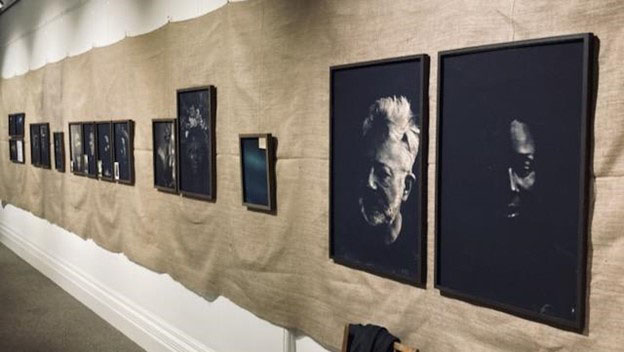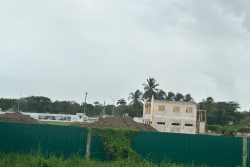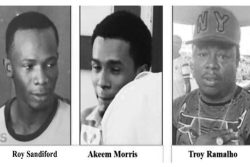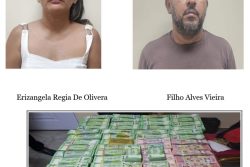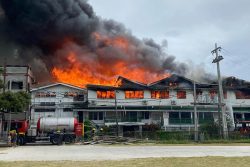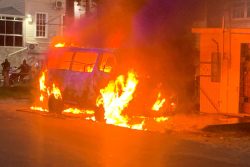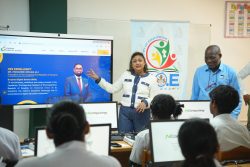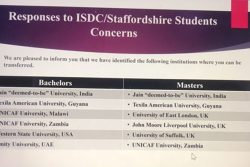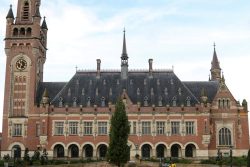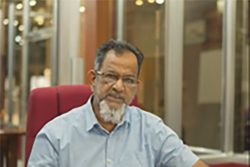“Archival research revealed that [Mal Woolford and Charlotte Woolford] are connected through historic transatlantic chattel slavery. Mal’s six-times great uncle Thomas Woolford left Wiltshire and settled in Barbados. A century later, at the abolition of slavery, his descendent Henry Woolford claimed compensation for enslaved people in Bridgetown, Barbados and Georgetown, British Guiana. It is probable that Charlotte is descended from those enslaved in the Woolford household in Murray Street, Georgetown.
Two hundred years later in London, they are neighbours.” (No Relation, press release)
From 25 March to 8 April 2024, British filmmaker and photographer Mal Woolford and his project collaborator, actor and educator Charlotte Woolford visited Guyana. It was Mal’s first visit and coincided with a personal trip Charlotte was undertaking in aid of her mother. The two had met by chance, and later began to unravel their likely connections during encounters as they collected their children after school. During the Guyana leg of their project, Mal conducted research at the National Archives, Guyana Lands and Surveys, and with a few individuals bearing the last name Woolford. Meanwhile, he and Charlotte came together to make analogue photographs in the environs of the Woolford Georgetown home and give a closed-door presentation to local photographers.
Akima McPherson (AM): Since the work in No Relation is fundamentally linked to Guyana, I thought it should be known to Guyanese audiences. So, for those of us who were not fortunate to see the exhibition, Mal, could you tell us a bit about the works and how they were hung? And considering how ticklish the subject of slavery is, what motivated you to pursue this project?
Mal Woolford (MW): We hung under 30 of our photographs on a sackcloth background in an entrance corridor. It’s quite striking. As you enter from the street you see our awkward first steps, getting to know each other, solving the problem of how to photograph a subject which has its flash-point 200 years ago, becoming confident in our handling of the early photographic process we use. These are mainly portraits of each other made on glass plates. Then on the return, back to the street, there are large images we made along Quamina Street in Georgetown of buildings and textures the enslavers and enslaved of the Woolford household would have recognised as their home.
As for the connection through slavery, once we realised we both have the same surname, the delight of the coincidence became for me a mixed set of feelings. On the enslaver side of history, so much energy and investment has been put into distancing ourselves from the reality of what happened. Abolition is recognised as a cleansing achievement of which we can all be proud. But it wasn’t a reconciliation, because it was unilateral. Two hundred years is just a handful of generations away and the history was present while Charlotte and I nodded hello to each other as we collected our children from school.
AM: Consequent to our conversations, I guess what has always intrigued me about the project is that you, Mal, seemed to be trying to co-opt the power of the image for a more nuisance role in place of assigning dignity and respectability to perpetrators of horrors while denigrating the victim-survivors of said horrors. Reconciliation was not a word that came to me. Can you explain how you see that possible through the body of work or perhaps individual images?
MW: As soon as we began to co-author with the old photographic process, we wondered what early images could have looked like if they had been in the hands of people interested in equality. If they were attempting to be free of white supremacy and colonial thinking. We have the freedom to explore and control how we each appear in the images we make, right down to how dark or light our skin appears.
AM: That’s very interesting. There is an image of Charlotte which I wondered about; it seemed like an interrogation of black(ness) – what/who is ‘black’. I found it interesting too because of how boldly it rejected proximity to white(ness) especially as it is fictitiously located in a time when epidermal proximity to white could offer advantages. But we can speak about this later. Charlotte, why did you want to work on this project?
Charlotte Woolford (CW): When Mal first approached me I felt quite confused but he began to talk to me about his passion for photography, so I felt like it appealed to my creativity. But what I really liked more was the question of our name and how they were linked and what journey it would lead us on. We worked mainly with film photography at the beginning but I felt like something was absent in our art but our relationship was getting stronger. Covid separated us and then Mal wanted to definitely work on a new project with me and had done a course on wet plate photography. I saw a self-portrait of him with this technique and said that this is what we should focus on. So we began using wet plate photography as our medium.
When you look at the images in the show there were so many times when we were looking for different things in our photography but it seems to always come back to our ancestral relationship. The pictures that we took don’t really look like us, they reflect a relationship of the past and I think there is something very unique and special about that.
AM: I agree, Charlotte. Mal, is the self-portrait Charlotte is referring to the one you showed me when I felt you were on to something – proposing a sort of unmasking of the enslavers? Was that image on show?
By the way Mal and Charlotte, I love the thoughtfulness of the display – at least as I understand it from photographs and what Mal has said. For me, the sackcloth recalls the bags for sugar exportation and the coarse fabric the enslaved were given to wear. Then of course you have images that blur notions of past and present. Sitting here in Georgetown imagining the space, I suspect a deliberate gesture to take audiences back into a nuanced past alongside the residuals of that past in modern-day Georgetown.
MW: I’m so glad that works for you. We think about materials a lot, to the point that we’ve adjusted our chemical developer so that it’s based on Demerara sugar.
Yes. It’s possible you both saw the same self-portrait. I’d been reading about the degrading ‘scientific’ Zealy/Agassiz daguerreotypes which were forcibly made of enslaved Africans in America and recent attempts by their descendent Tamara Lanier to gain control of the images from Harvard University. I made a self-portrait with those images in mind. The strength of your response was helpful to know this was something worth pursuing. It didn’t make it into this selection. We’ve hopped and skipped through our earlier work given we’ve made one or two hundred plates together.
We really wanted the show to be one that stimulates thoughts and conversations: for it to be an encounter with a difficult past and for that encounter to be okay, to create openings. As you follow the images, you see our first tentative steps making work together and holding the history in mind. Building confidence in the work and in our friendship, and that seems to come through.
———— This conversation continues here on 15 December 2024…….
The work done in Guyana for the project was supported by inputs from young artist and project assistant Rouchelle Stephens; photographer Michael C Lam; Curator (ag) of the National Gallery of Art, Castellani House, Ohene Koama; and Akima McPherson. The exhibition ran from 17 November to 1 December at the Westminster Quaker Meeting House, London. Viewings by appointment are possible through December.
